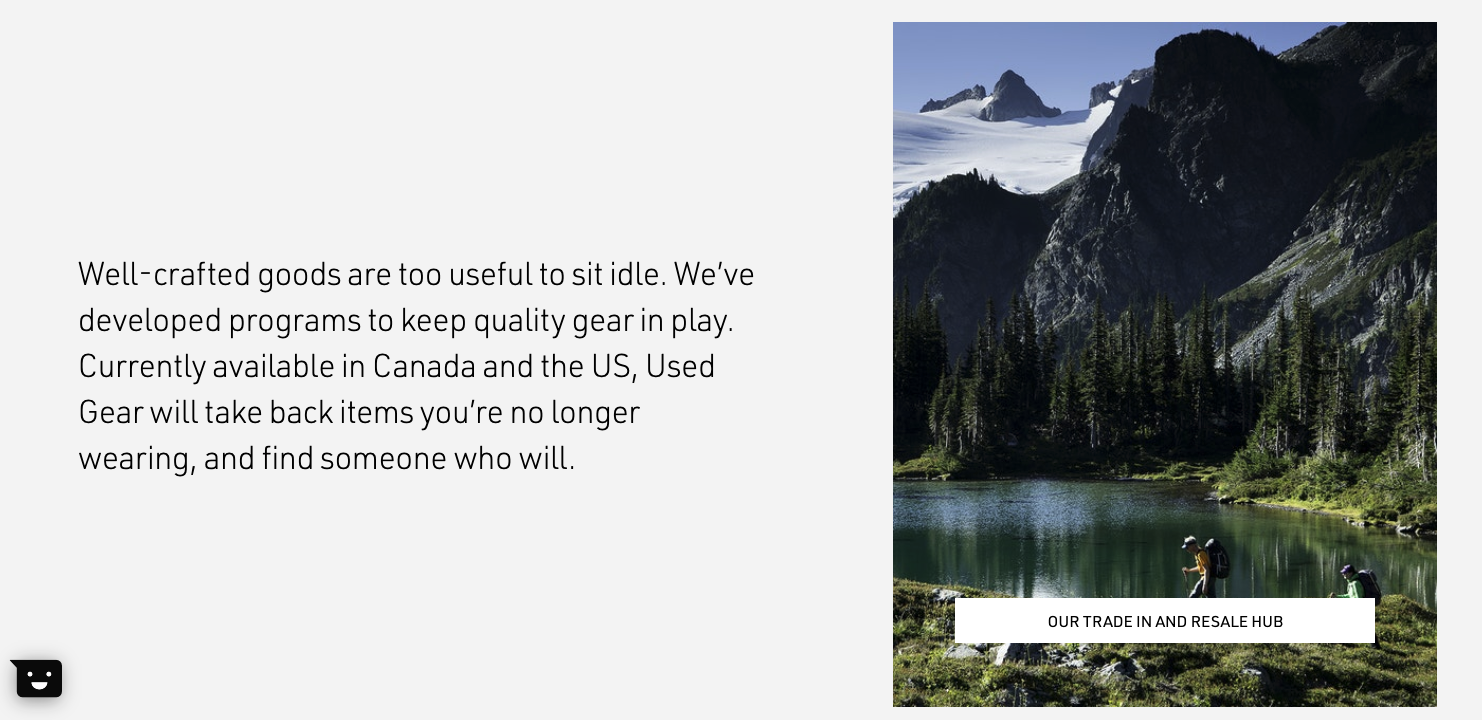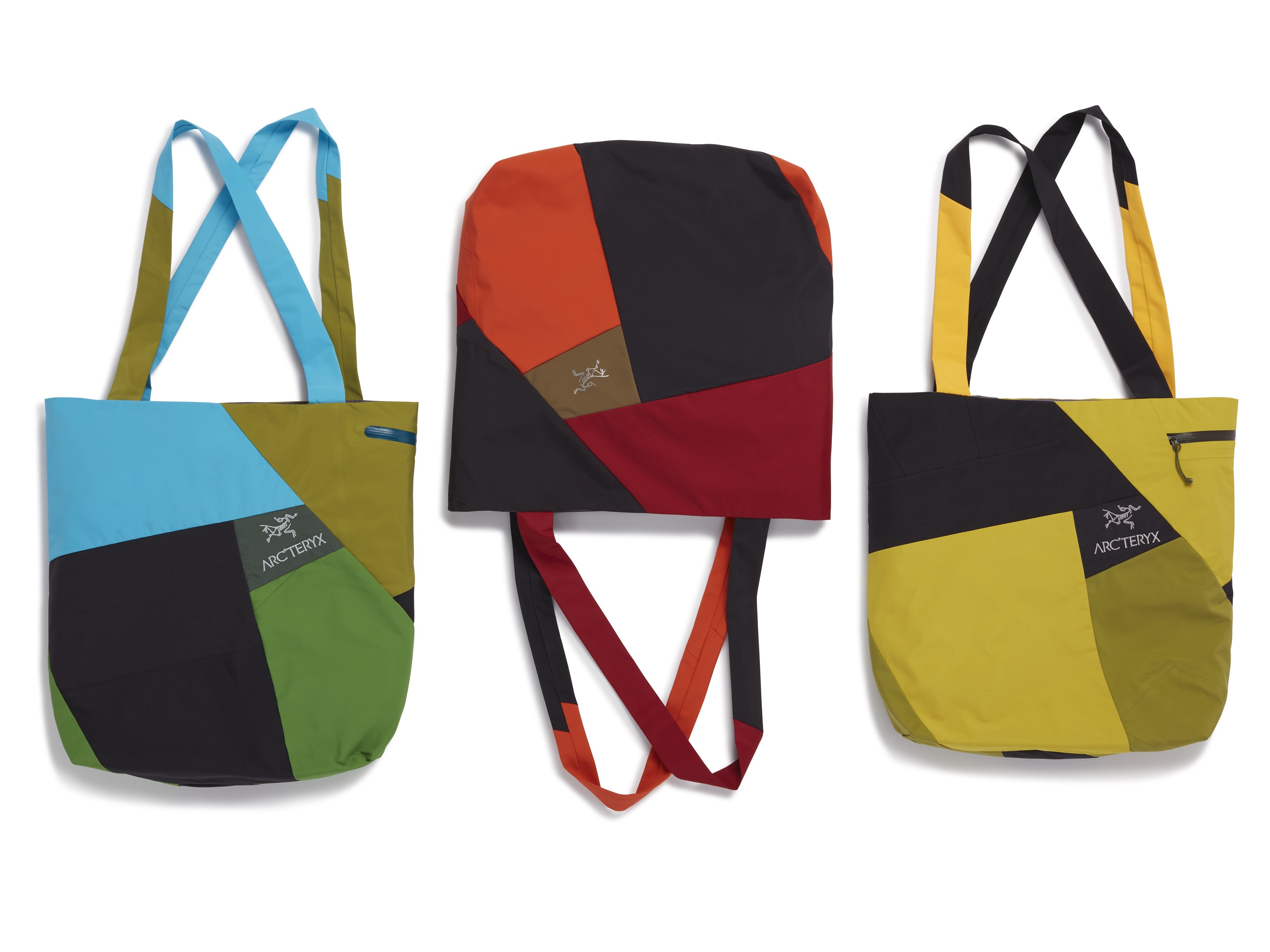In the front yard of the Coast Mountains in North Vancouver, Canada, Arc’teryx, an outdoor clothing and climbing gear company, is building a circular economy.
Now, it’s ready to share more of that story with its customers, who spend time climbing, hiking and skiing in those mountains and peaks in other parts of the world. Today, the company launched its ReBird platform, a centralized hub on the company site that gives customers an inside look at its circular initiatives — from upcycling and resale to care and repair. ReBird also shares educational resources about what a circular economy is and how customers can help Arc’teryx continue to scale its circular operations.
“We’re trying to create clarity for our [customers] that we do care about this, that’s it’s really important to us that we’re making progress by experimenting a bit,” said Katie Wilson, senior manager for social and environmental sustainability at Arc’teryx.
The company started implementing circular strategies for its products years ago — for example, it launched its used gear program in the United States in 2019. In this program, Arc’teryx accepts used gear that’s still in good condition. From there, the company cleans and repairs the used gear before reselling it online at lower prices. For trading in gear, consumers receive a gift card with 20 percent of the gear’s original value.
In 2019, Arc’teryx processed nearly 5,000 items in the first six months of the program, on which it partners with Trove, and the company said the program is continuing to grow. (For context, Trove is the company behind resale programs offered by Patagonia, Levi’s and Lululemon.)
But for Arc’Teryx, the message to its customers about its work hasn’t always been a priority. The ReBird site is a one-stop shop where they can learn about all the ways to engage with the company on its circular initiatives. For example, as a site user, a person will learn about why the take-make-waste economy is not the way to go and how the company’s used gear program can extend the life of items. They also can navigate directly to Arc’teryx’s trade-in and resale hub to get started trading in their own gear.

The ReBird site offers insights for how customers can engage with Arc’teryx on its circular initiatives.
“I think it is really important to know that if we don’t bring them along with us, that’s a real lost opportunity for instigating change, society-wide,” Wilson added.
For companies that are implementing circular economy processes such as recommence of products, materials substitution, rental services or repair initiatives, storytelling is important to get consumers and other businesses on board. As Mike Hower wrote last year, “If we hope to unlock the circular economy’s full potential, we’ll need to make sure that it’s widely understood and embraced — and not just by sustainability wonks.”
Why now?
In 2020, Arc’teryx set two science-based targets — reduce absolute Scope 1 and 2 greenhouse gas emissions by 65 percent by 2030; and reduce Scope 3 greenhouse gas emissions by 65 percent per unit of value added by 2030 — both from a 2018 base year.
According to the Arc’teryx sustainability site, the latter target means “reducing the carbon emissions per unit of value added to our business value chain” including all carbon emissions related to its materials, products, factories, mills, shipping and distribution centers.
I think we all realize that the less our business success depends on extracting new, raw materials, the better that’s going to be for the planet.
Wilson said the company knew that a circular approach would be a big part of its strategy for achieving those targets in two key areas, sourcing more recycled or waste materials for its product designs and relying less on virgin materials.
“I think we all realize that the less our business success depends on extracting new, raw materials, the better that’s going to be for the planet,” she said. “We are really trying to decouple our growth from our greenhouse gas emissions.”
Wilson noted that part of the motivation for ReBird is to shift mindsets. Here is one question Arc’teryx is hoping to answer with its new online platform: “How can we encourage more people to collectively begin to repair their goods or trade it in so somebody else can make use of it instead of letting it gather dust?”
Circular strategy in motion
In addition to launching the ReBird site, the company also this week released its first upcycled products, made of materials from warranty-returned Gore-Tex waterproof jackets.
Wilson noted that Arc’teryx has high standards of repair and that authorized warranty repairs of its products are completed at its local Arc’One factory in New Westminster, British Columbia, as well as in Switzerland, Denmark and Norway. As of 2019, it was averaging about 27,000 warranty repairs per year in North America and Europe. Its products are distributed through more than 3,000 retail locations worldwide, including over 80 branded stores.
Several years ago, Arc’teryx noticed a problem that it believed it could solve. It was receiving jackets that were sometimes beyond repair and could end up being thrown away.
“Rather than discarding them, we wanted to make something new out of them,” said Greg Grenzke, Arc’teryx’s director of product design.

The company is upcycling materials from a jacket line to create new products.
From the items that cannot be repaired, materials get collected at Arc’One. The collection process has been going on for years, during which individuals and teams picked through items to experiment on new repair options and to mock up upcycled products.
“This past year, this pile of goods has been sorted — what can be repaired for resale … and what has sufficient swatches of good material to be suitable to make something new out of,” Wilson said.
It decided to use this pool of materials to make a tote and pouch. “With all these upcycled products, we want to make sure we are solving a problem. Not just making more stuff to put on the market,” Grenzke said.
Another way that the company is trying to keep textile waste out of landfills is by using “end of the roll material.” It’s challenging to know exactly how much yardage of a material a company will use. “It’s just natural that you do have leftovers sometimes,” Grenzke said.
But sometimes, when those leftovers cannot be donated to a university or sold to another organization — both practices that Arc’teryx has used in the past — the materials end up being trashed.
The design team at the company wanted to create more uses for the end of roll. They came up with a windbreaker called the Stowe Windshell ReBird to use the end-of-roll textiles.
Grenzke said that from the founding of the company, it always has believed in making the most durable gear possible. “That’s the foundation of where we come from,” he said. “But now we want to make it the most durable with the least impacting materials possible.”
All of these products are being launched in small batches but Arc’teryx plans to scale these types of offerings in the future.
“Upcycling is a huge effort,” said Grenzke, who noted that the company collected materials for upcycled products in house. Other companies with similar goals — Coyuchi, The North Face and prAna, to name a few — have tapped on organizations such as The Renewal Workshop to help.
Arc’teryx is also rethinking materials at the beginning of a product’s life, according to its executives.
It’s a member of the Textile Exchange, a fiber and materials industry nonprofit, and has started using the organization’s preferred materials platform to inform its fiber choices. According to the 2020 Preferred Fiber & Materials Market report from the Textile Exchange, all down used in Arc’teryx products is certified to the Responsible Down Standard, and the company is working to transition its wool supply to the Responsible Wool Standard.
Arc’teryx is not the only outdoor gear company to recently make the effort to switch to more responsibly sourced materials and fibers that are recycled or have less of an impact on the environment. In April, Canada Goose committed to a plan that will see it move to source 90 percent of the materials it uses in its products from the Textile Exchange’s list of preferred fibers by the end of 2025.
Arc’teryx plans to keep iterating on its circular initiatives and keep sharing its progress with its customers. When the company has new ReBird items to launch and other news about its upcycling, resale and care and repair initiatives, it plans to share that news on the platform.
“This is just the beginning for us,” Wilson said.

